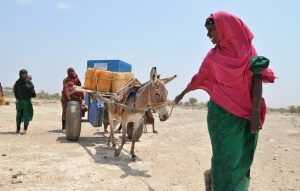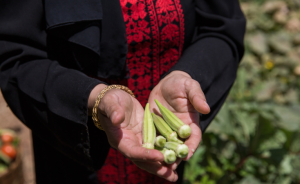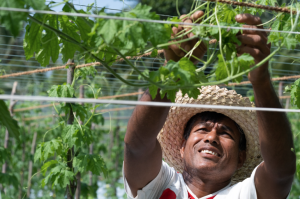Small-scale farmers could help fill the global food gap if they irrigate properly – even with growing climate challenges
Small-scale farmers are the unsung heroes of our food systems. Small farms, of less than 2 hectares, account for only 11 per cent of the world’s agricultural land, yet they produce 35 per cent of the world’s food.
Production from small-scale farms is also more diverse, contributing to nutritious diets, sustainable food systems and biodiversity.
In fact, they hold the key to feeding the world, especially in an age of climate change.
In many places, rain has nurtured this astonishing production. But it’s also made farmers more vulnerable to uncertainty and even yield loss due to unforeseen droughts and changing rainfall patterns.
But, if small-scale farmers irrigate their land properly, this can help them adapt through climate-smart agriculture, improving soil fertility, soil and water conservation, and organic carbon sequestration, thereby increasing food production and income.
Simply investing in irrigation is not enough. In my years working on irrigation with IFAD, I’ve come to understand that farmers themselves must be convinced of small-scale irrigation. After all, they will be the ones committing their time, money and labour – they want to be sure it will lead to long-term profitability.
Making the case for irrigation

Gender is one of the factors used to establish farmer types who can benefit from different types of irrigation. ©IFAD/FAO/WFP/Michael Tewelde
While the benefits of irrigation may seem obvious, farmers face many barriers, like limited access to land, water, value chains, and affordable irrigation equipment or finance.
Carefully planned business cases can show farmers how to overcome these barriers and convince them of the benefits of irrigation. For example, IFAD’s investment in water management in six African countries used new models of agricultural water management and new financing mechanisms to develop distinct business cases for different farmer types in each country.
Gender was one of the factors used to establish farmer types who could benefit from different approaches to irrigation. Wealthier farmers, who are usually male, often adopt labour-saving motorized irrigation technologies, while women farmers, who are often poorer and have smaller plots of land, are left behind. This means women in particular can benefit from well-designed irrigation support and financing that enhances gender equity.
In Ethiopia, one of the six target countries, we discovered that women preferred solar pumps that were located near the home, as these also reduced efforts on domestic chores. This finding informed the development of a business model for irrigation, making the case to farmers that solar-powered pumps would be an attractive investment, particularly for women.
Building irrigation ecosystems

In Jordan farmers use drip irrigation systems to grow fruit and vegetable. ©IFAD/Ivor Prickett/Panos
For small-scale irrigation to work, a group effort is needed. Producers, farmers, irrigation equipment providers, agri-finance institutions, government institutions, water and resource planning agencies, and development partners must work together to design, supply, build, operate and maintain the right irrigation systems.
The International Finance Corporation‘s (IFC) Niger Irrigation Project shows how this can be done even when climate change is hitting small-scale farmers hard. The project built a business ecosystem, simultaneously developing suppliers and generating demand for drip irrigation. The results? Average yields increased by 46 per cent, farmer’s incomes grew by 71 per cent and water use was more than halved.
Lessons for the future

In Sri Lanka a farmer uses the flood irrigation method to water his plants. ©IFAD/Ruvin de Silva
While building these business cases may seem complex, expert guidance is at hand. The Handbook for Scaling Irrigation Systems brings together IFAD’s expertise in working with rural people with the IFC’s focus on private sector development to draw out lessons on how to deliver and maintain effective and sustainable small-scale irrigation systems.
The handbook aims to share the lessons and insights from the combined experience of IFAD and IFC in promoting and expanding access to advanced irrigation for small-scale farmers. It takes a practical approach to guide policymakers, private sector and development partners and farmers themselves, helping them to explore innovative financing models and develop, operate and maintain efficient and sustainable small irrigation schemes.